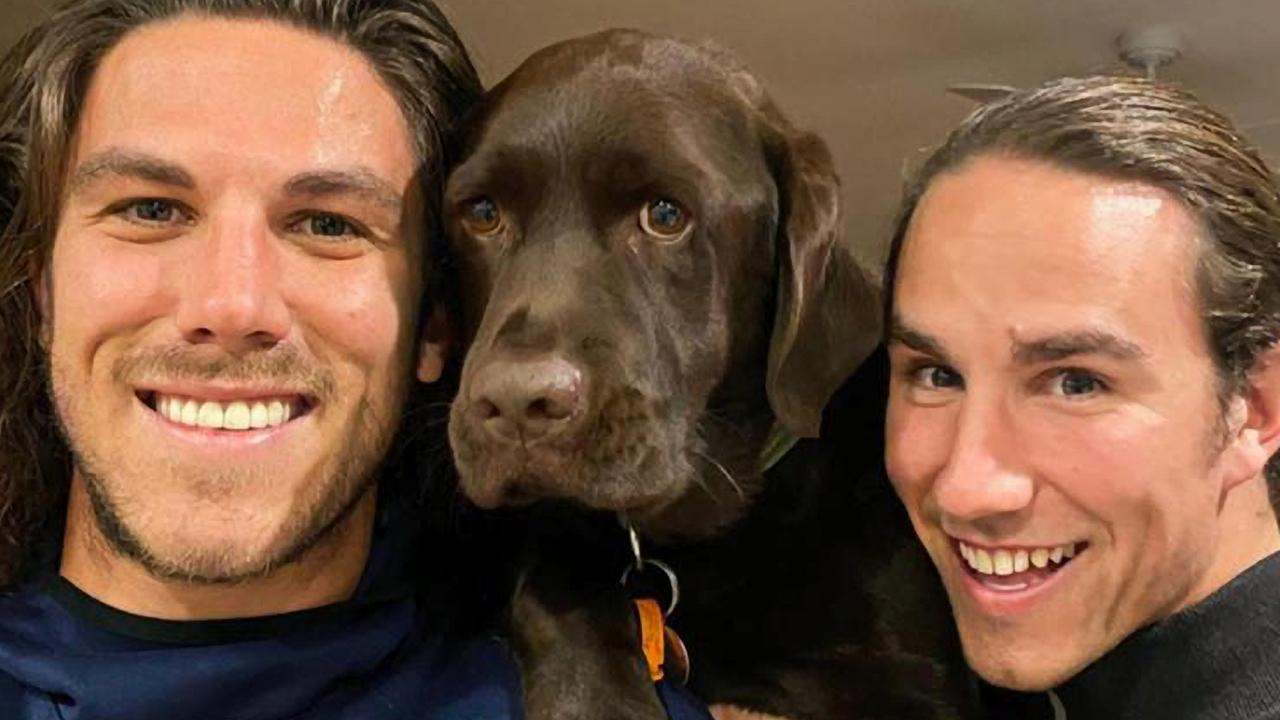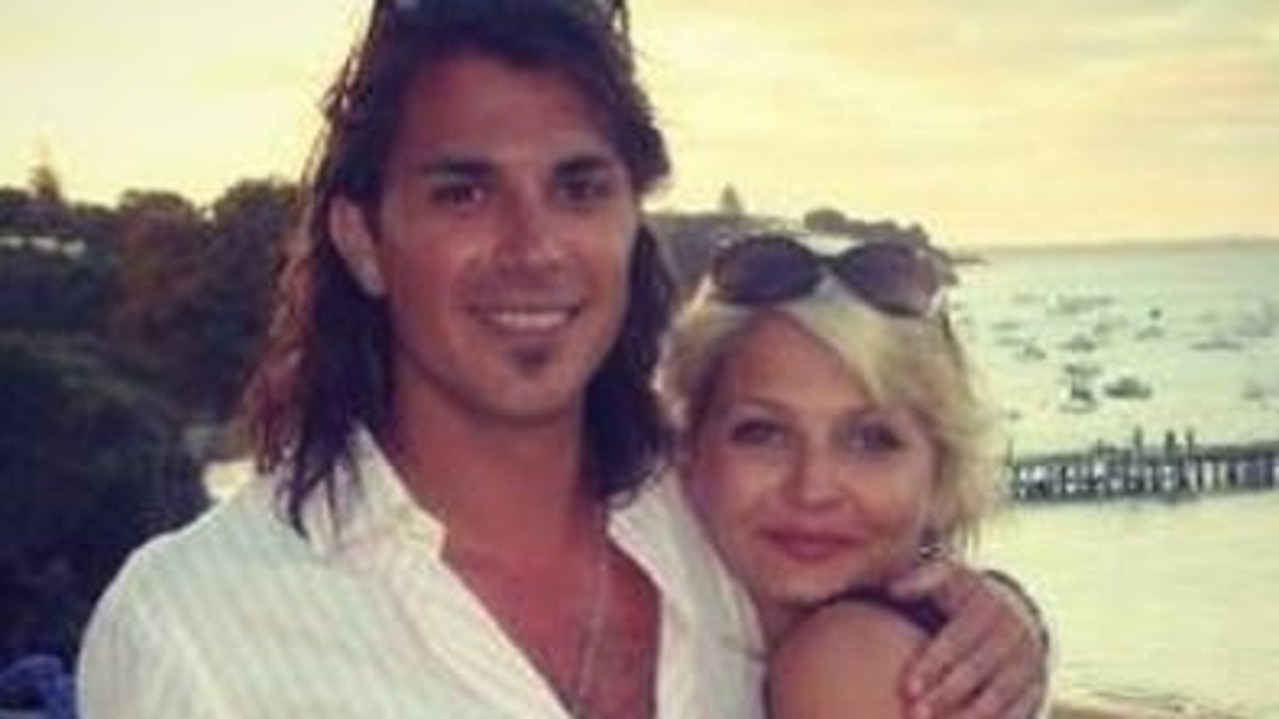Helicopters, disguises and shootouts: Australia’s most daring jail breaks
TODAY’s jails are nigh impossible to break out of. But there was a time when desperate crooks regularly risked bullets and braved barbed wire to bust out of our most secure prisons.
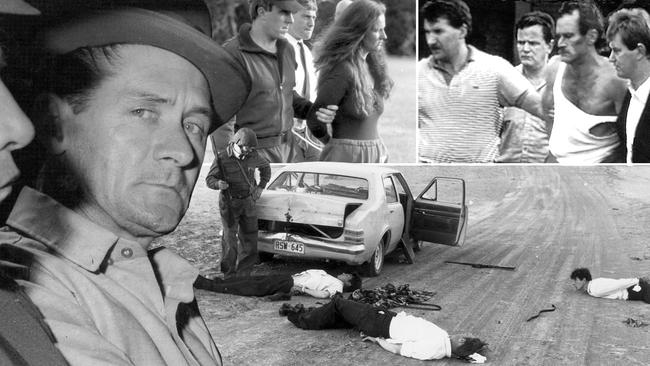
Crime in Focus
Don't miss out on the headlines from Crime in Focus. Followed categories will be added to My News.
THE closest thing Australia sees to a prison escape these days is a low-level crook doing the bolt from a minimum security jail.
But there was a time when breakouts by dangerous criminals from our most secure prisons were commonplace.
Some risked death from the gunfire of guards stations in towers at places like the old Pentridge. Others used explosives, hostages or the art of disguise.
THE LIFE OF HELLS ANGEL BALL BEARING
Peter Gibb
IT WAS the escape that started with a Melbourne CBD bang and ended six days later in a blazing bushland shootout.
By that time, there was one corpse, a wounded policeman, a career in ruins and a feared criminal headed back to where he belonged.
Not that the scheme’s mastermind, Peter Gibb, was actually the type who would have lost too much sleep.
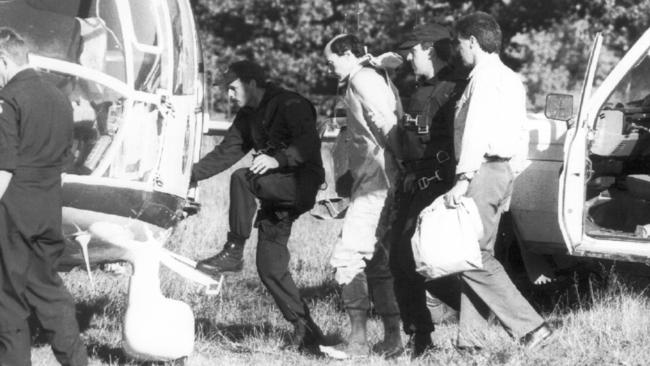
He just wanted out and used his lover, rogue prison guard Heather Parker, to do it.
Gibb convinced Parker to get him explosives which he and jail buddy Archie Butterly used to blast their way through a security window at the old Melbourne Remand Centre on March 17, 1993.
The pair ran to a getaway car then travelled to a stolen motorcycle, which they crashed on Southbank Boulevard.
Young police officer Warren Treloar tried to intervene and was wounded in the ensuing shootout.
Gibb quickly grabbed the service revolver of Sen-Const. Treloar — who would survive — before the fugitives and Parker reunited and went bush.
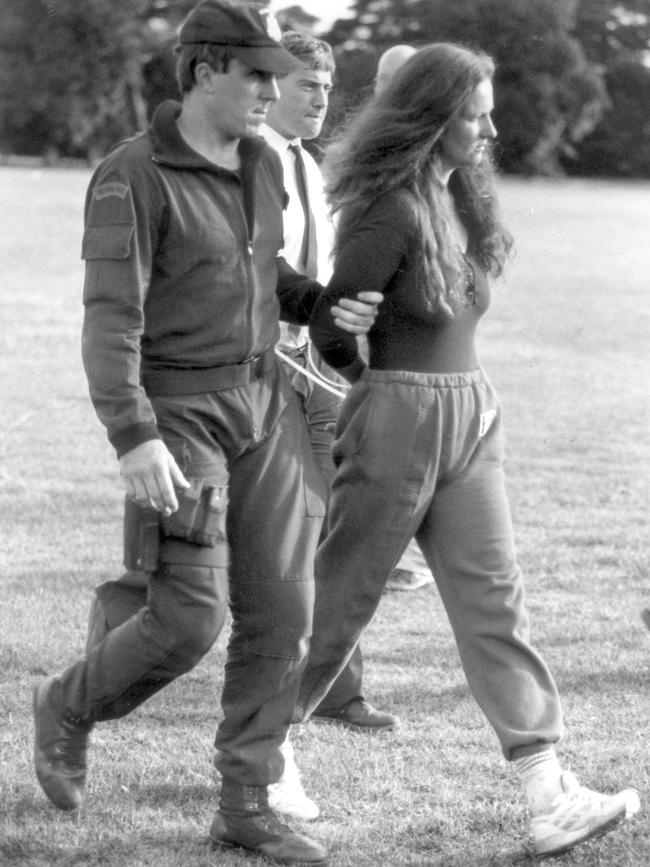

The first sign police had of their whereabouts was when the Gaffneys Creek Hotel in northeast Victoria burnt down on the morning of March 11.
The trio had been staying there as Gibb and Parker helped Butterly recover from injuries he suffered when he fell during the breakout.
Three days later, they were cornered in isolated bush near Jamieson.
Butterly was to die during a shootout with members of the special operations group, but not from one of the police bullets.
The favoured scenario — never proven — is that Gibb shot the police-hating Butterly to avoid being killed in the confrontation.
Gibb was later released from prison but continued to attract trouble with the law.
He died of natural causes in 2011 in the period after being assaulted at Seaford.
Christopher Binse
ARMED robber Christopher Dean Binse has been one of Australia’s most prolific escapees.
The feared gunman, recently jailed over a bizarre siege in Melbourne, has at least six convictions for escaping custody.
The most dramatic was in 1992 when he busted out of St Vincent’s Hospital.
Binse, who gave himself the nickname “Badness”, had been under heavy guard at the hospital where he was recovering from a stab wound suffered at Pentridge Prison.
A female acquaintance is suspected of smuggling a gun into the bandit, which he then used to menace three guards and bolt.
Binse was recaptured in Sydney five weeks later but escaped again from Parramatta jail before being recaptured.
By 1995 he was at it again from a high security unit of Barwon Prison, near Geelong.
Binse teamed up with another seasoned escaper, the killer John William Lindrea, and caused a massive security alarm with a futile bid for freedom.
The pair cut their way from their cells and into an exercise yard before disappearing.
A massive police operation swung into action.
The degree of police concern was evident in radio communications issued at the height of the drama.


“They will not hesitate to take on police and if they have in fact got out they may be armed,” police D24 said on air.
Binse and Lindrea were found hours later hiding under building materials inside the prison grounds.
Police had good reason for their concern.
Binse, during a previous spell on the run, had terrorised workers during armed robberies.
He celebrated his efforts lodging a newspaper advertisement saying “Badness is back” and sending investigators postcards and Christmas greetings, one showing Santa with bags of cash.
Brendon Abbott
ARMED robber Brendon Abbott, known as the Postcard Bandit, twice went on the run in spectacular fashion.
In 1989, he and accomplice Aaron Reynolds disguised themselves as prison officers and went over the wall of West Australia’s Fremantle Prison.
They had spent many hours in a jail workshop tailoring uniforms to mimic their captors.
During his time on the run, Abbott earned his nickname by allegedly having photos taken everywhere from police stations to Uluru then sending them to detectives.
It is a claim Abbott’s supporters deny.

The second escape, from a Queensland jail in 1997, was among the most dramatic Australia has seen.
A girlfriend smuggled in “angel wire” which Abbott and four accomplices used to cut their way out.
Abbott associate Brendan Berichon, who was a free man, was the next part of the plan.
Armed with a high-powered rifle, he acted as sniper to disable a vehicle being driven by guards as the criminals scrambled to freedom at the perimeter.
Abbott’s four less resourceful accomplices, Jason Nixon, Andrew Jeffrey, Oliver Alincic and Peter Stirling, were all rounded up fairly quickly.
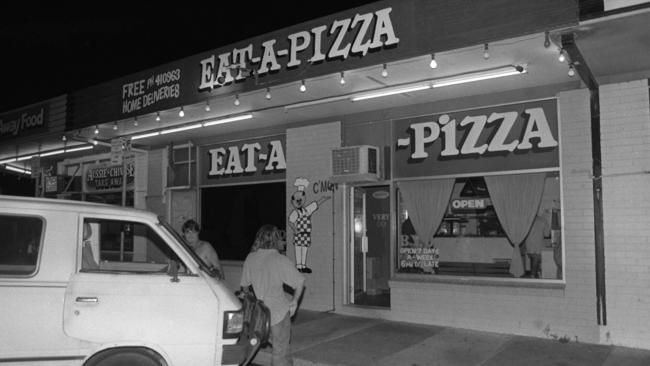
Their lack of discipline was personified by Jeffrey who, after big-noting about being one of the escapees in a Footscray pub, belted a man who dared argue and was arrested.
But Abbott — who reputedly left a letter requesting a transfer in his vacant cell — was always going to be a tricky proposition for authorities.
He reunited with Berichon in Melbourne where they lived quietly in Carlton until the younger man injured two police in a shootout in Box Hill.
It was the beginning of the end for Abbott.
He was forced to get out of town and was arrested the next month in Darwin.
The Schiller kidnapping
IT WAS one of Australia’s wildest escapes, documented in remarkable images from Adelaide Advertiser photographer Ray Titus.
In 1970, Terrence Haley, Raymond Gunning and Andrew Brooks broke out of South Australia’s Cadell Training Centre, sparking a high-risk drama.
The trio went to a home in Murbko, on the Upper Murray, kidnapped 21-year-old Monica Schiller and stole guns and food after tying up her father and boyfriend.
They headed to Adelaide, then Hawker in the Flinders Ranges, where they stole another vehicle.
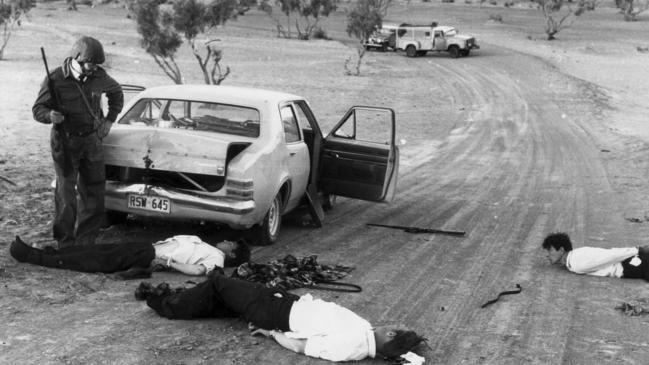

The group then headed for the Outback, gunning it towards Darwin along the Birdsville Track, apparently with harebrained plans of making it to Asia.
Ms Schiller was later to recall how her captors listened to radio bulletins throughout the night, laughing at broadcasts saying they were still in their prison uniforms.
“They had firearms and I never was very good at running anyway. Put yourself in my position — there were three of them and only one of me,’’ she told the Advertiser.

Meanwhile police and the media headed to Birdsville by plane, arriving in the area ahead of the fugitives.
The police doubled back to intercept the kidnappers, setting up a roadblock, all the while conscious of the terrified Ms Schiller’s safety.
The escapees — who had only months left on their sentences — had no intention of going quietly, opening fire on their pursuers.
But they were quickly rounded up without bloodshed, leaving Ms Schiller unharmed.
Titus won a Walkley Award for his work in the immediate aftermath of the drama’s end.
John Killick
CAREER criminal John Killick was no spring chicken when he decided to spring himself from Sydney’s Silverwater Prison in 1999.
Going over the wall was not an option for Killick, but his girlfriend Lucy Dudko had another idea.
Dudko, who had seen the Charles Bronson movie Breakout, decided she could turn fiction into reality.
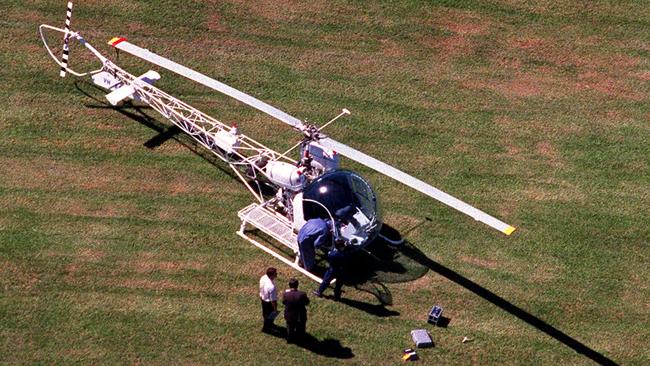


The 48-year-old Russian librarian did it by the book, organising a helicopter joy flight then pulling a shotgun on its horrified pilot Tim Joyce.
She directed Mr Joyce to head for Silverwater where he was ordered to land the chopper on an exercise yard.
Killick was waiting and quickly aboard.
In bizarre scenes, other prisoners tried to grab on to hitch a ride out as guards opened fire.
Killick and Dudko spent 45 days on the run, some of it in Melbourne, before being captured in New South Wales.
They were dealt with toughly in the courts, Dudko getting a maximum 10-year sentence and Killick an extra 15.
Killick, now in his 70s, was recently granted parole by New South Wales authorities but was forced to spend time in a Queensland jail where he owed two-and-a-half years over a 1980s armed robbery.
George Savvas
THE ESCAPE of George Savvas was breathtakingly simple.
There were no guns or scaling of walls and it remains astounding a criminal of his calibre could have been allowed to pull it off.
After all, how could a man doing 25 years for planning to import 80kg of drugs into Sydney just walk out of Goulburn Prison.
In fact, Savvas was only at Goulburn because a plan to get out of jail in Maitland months earlier had led to his being moved.
Savvas ultimately got the transfer he really wanted with one of the oldest tricks in the book – a good disguise.

On July 6, 1996, he donned a false beard, moustache and wig and strolled from the visits area to freedom.
Savvas clearly wasted no time getting back into the good life but was smart enough to stay under the radar.
But, eight months later, his love of the good life brought him undone, thanks to a mysterious call to the triple-0 emergency line.
“Hello, my codename is the Black Fox,” the caller said.
“George Savvas is at the Suntory Restaurant behind the Hoyts cinema complex in Kent Street. He is a wanted man.”
It was indeed the fugitive, cocaine in pocket and enjoying some fine dining with two attractive women.
It took just two months for Savvas to start thinking of another way out but this time prison authorities were ready.
They revealed he and serial killer Ivan Milat had plotted an escape over the wall at Maitland.
Savvas was found dead the next day after, apparently, taking his own life.
Russell “Mad Dog” Cox
HE WAS known to the public as “Mad Dog” but Russell Cox was an intelligent, calculating and resourceful criminal.
In 1975, he and two other inmates tried to bust out of Long Bay prison in Sydney, taking a warder hostage and threatening to shoot him unless the gates were opened.
As they drove to freedom, the hostage — who was shot twice in the leg during the drama — clung to the bonnet of the car before rolling off.
The jail break ended badly when the escapees’ vehicle was rammed by a truck and Cox was sentenced to life imprisonment.
HOW OUR FAMOUS FUGITIVES WERE CAUGHT
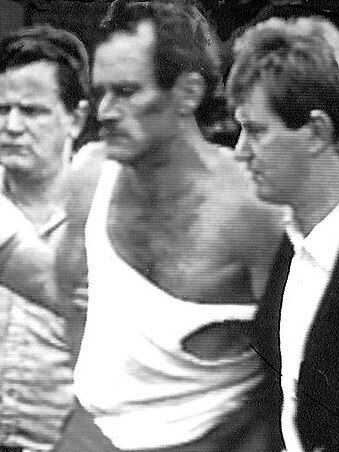
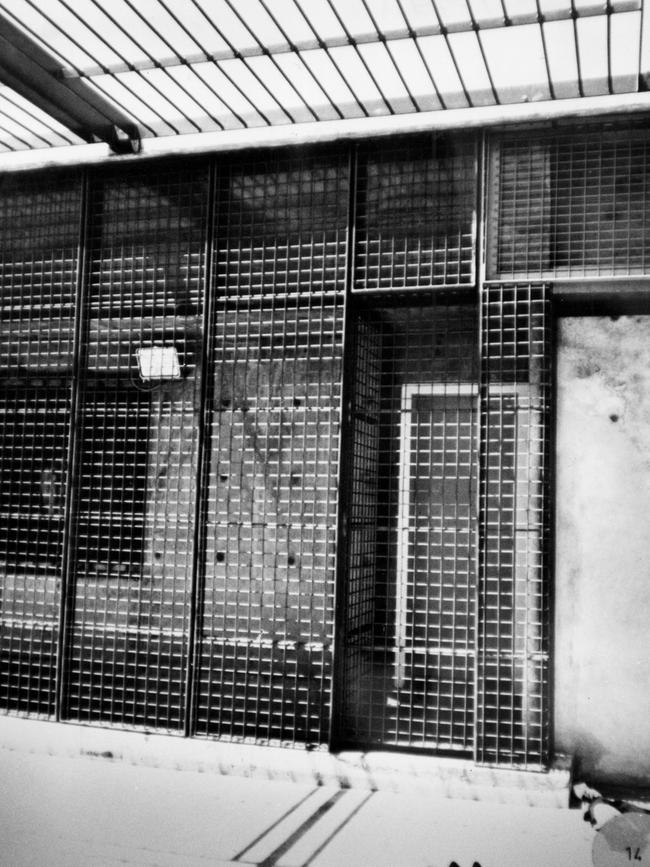
So, when he was thrown into the supposedly escape-proof Katingal special security unit, the scheming man born Melville Peter Schnitzerling found a better way.
He noticed a blind spot in the exercise yard which was not under surveillance
Cox hauled himself up every day by one hand and used a hacksaw to gradually cut through a steel bar.
When the day came to run in 1977, he asked a guard at lockdown if he could return to the yard to fetch one of his sneakers.
Cox bent the bar then climbed through the roof of an exercise yard and jumped over barbed wire fences.
It was to be 11 years before he and accomplice Raymond Denning were arrested in a dramatic shootout with police in the Melbourne suburb of Doncaster.
Cox was charged with eight armed robberies committed in that period but suspected of many more.
He was later implicated in the 1982 murder of standover man Brian Kane at a Brunswick pub.
But, in the end, he didn’t do a minute extra for the Katingal escape after convincing a court that it was not a jail under the state’s prisons act of 1952
Cox is now a free man and lives in Queensland.
Ronald Ryan
THE ESCAPE of Ronald Ryan was the beginning of one of the most significant chapters in the nation’s criminal history.
Ryan, previously a petty offender, in 1965 made his move to get out of Pentridge Prison in Coburg with accomplice Peter Walker.
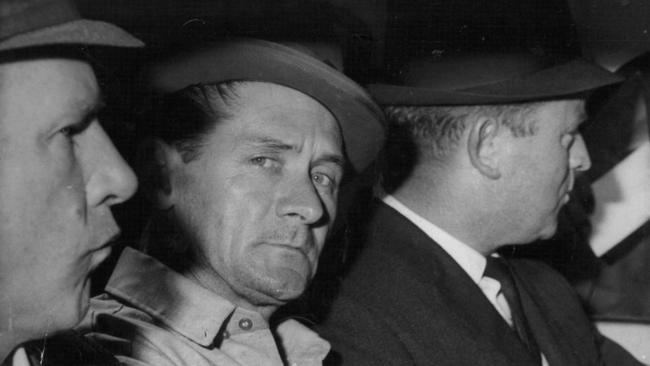
As they bolted and climbed their way to freedom amid gunshots, prison officer George Hodson was fatally shot through the heart outside the jail walls.
It was to spark the biggest manhunt in the state’s history and, in a mounting climate of public fear, the pair continued to commit crimes.
Four days after busting out, they robbed a Melbourne bank but worse was to come.
Walker, apparently concerned he and Ryan would be given up to police, shot dead acquaintance Arthur Henderson in a Middle Park toilet.

Ryan and Walker were later captured in Sydney.
When Ryan faced trial for Mr Hodson’s murder, his defence suggested the fatal round was fired by a prison officer but Ryan was convicted and sentenced to hang.
The shell case was never found.
Ryan was eventually hanged on February 3, 1967.
The episode sparked one of the most passionate debates in Victoria’s history and was a watershed for the justice system.
No one has since been executed in Australia.
The remains of Ryan were exhumed 40 years later from the grounds of Pentridge and his remains transferred to his family.

